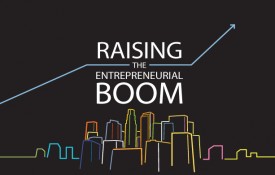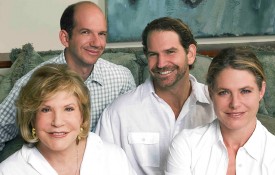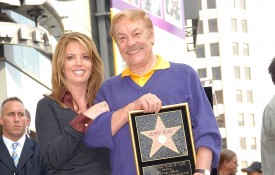In my role leading external communications at Parsons, I’m used to working with reporters on deadline to keep the facts straight. Like any communications professional. It comes with the job. But I never thought I’d be scrambling to avoid our nearly 80-year-old company being falsely accused of murder.
Let’s back up.
As a company, Parsons is involved in building, protecting, and advancing global security and human discovery around the world. Our clients range from small state transportation authorities to the U.S. Department of Defense, intelligence community, and Department of Homeland Security, and clients in the United Arab Emirates, Australia, and everywhere in between. We do a lot around the world all the time.
But earlier this year, I got an inquiry that was different than any other I’ve received in my career.
It was from a major U.S. West Coast city newspaper regarding a story that was clearly being written that day; it was very much a “you’re welcome to respond, but the story is running regardless” inquiry. The reporter asked for comment on a filed lawsuit that alleged employees of “Parsons Security Systems” assisted in the cover-up of the murder of an undocumented immigrant by U.S. government.
Let that sink in.
Per the inquiry, our company deleted video evidence from witness’ cell phones, footage of U.S. government officials accused of murdering an individual who had recently crossed the border. The story was running within hours.
Like others during the COVID-19 pandemic, I have been working from home since March 2020 and trying to balance fatherhood, work, and personal stress. Thankfully I was at my desk the exact moment the inquiry beeped into my in-box. After rereading the inquiry several times, I called our legal department to understand the facts, and began drafting a series of holding statements.
Legal’s search would take a while, but the early feedback was that we had no record of the reported contract or event.
Knowing the reporter was on deadline and the reward for silence was a phone call from every major television network in North America, I picked up the phone and called the reporter. It’s important to note that she didn’t include her number on the email (I had to hunt for it), which probably explains the surprised reaction I received when she answered the phone. After exchanging niceties, we began chatting human to human and quickly uncovered the confusion: The real company she was looking for was two letters off from “Parsons.” Two letters that made the difference between inaccurate national media attention, a potential plunge of the stock price, and uncomfortable conversations with the board.
In the haste of trying to make a deadline—pressure undoubtedly put on that reporter from above—those two names apparently blended together, with nearly catastrophic results for Parsons’ reputation.
Two letters.
Part of this need for speed is an unfortunate structural reality of the economics of news. No longer do reporters have print or radio deadlines to report the news. Instead, the clock starts running as soon as the news breaks, as outlets strive to get their stories up first for a high Google ranking and the traffic that comes with it. It is important to be first and right. But it’s catastrophic to be first and wrong.
Having cut my teeth at the Philadelphia Inquirer, I understand the immense pressure journalists are under with a 24/7 news cycle, the “everyone is a reporter” mindset, and campaigns of public distrust sown by the political establishment.
In this new reality, editors have to trust journalists more than ever to get the key facts right on their beat. Fact checking is the purview of only prestige magazines and television networks at this point; most newspaper stories go to a copy editor who is looking for grammar and spelling mistakes.
As reporters are incentivized to go faster with less support, it’s even more important for communications practitioners to be proactive and responsive. With fewer guardrails on the media side of the road today, those of us in public relations need to drive more carefully. The margin of error is thinner than it’s ever been.
This reality is an opportunity for top-tier communications professionals to prove our worth. Many news outlets are doing more with less, but what they do has not diminished in value. And while reporters and public relations practitioners may have different interests, we share the goal of getting the facts correct.
The reporter and public relations person relationship has always been a dance, but now the music is faster. And it has the internet.
Here are some more takeaways from my false alarm:
- Make your contact information easy to find.
I’ve heard firsthand from so many reporters who hate when a company lists a generic press@ inbox that is infrequently monitored—or worse, provides no PR/media contact information at all. Don’t do it. It makes reporters’ jobs harder and it makes us less likely to field their requests in a timely manner. In the example above, if they didn’t have my information that story would have been published and we would have been falsely accused of murder. Keep that in mind.
- Respond right away.
Most journalists have deadlines that are measured in hours, not days. It’s always best to connect ahead of publication, rather than wait for the perfect response and have to ask for a correction. It is important that you, as the public relations person, have your information correct, but the situation above is a good reminder that even if you have 70% of the answer, you need to act.Trust your gut and your training.
- Be ready.
We have all heard stories about stocks that go up because their ticker symbol is similar to that of a hot new IPO. If a piece of good, bad or controversial news happens to a similarly named company, it’s a good idea to take note. It’s always important to be prepared with holding statements, the right internal contact list for “who needs to know what at what time,” and your crisis plan—especially in a highly connected digital world.
I was once told that communications is a full-contact sport. It’s true.
Sometimes you will get punched in the face, but sometimes you get to block one too.
Bryce McDevitt is senior director of external communications at Parsons Corporation.
Want more insight from our C-Suite Thought Leaders? Find all their pieces here.














































